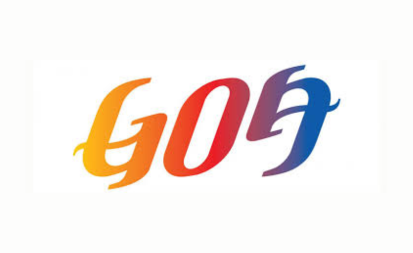Festivals of light and joy in Goa
Unique traditions of Diwali and Tripurari Poornima In the vibrant cultural landscape of Goa, festivals come alive with celebrations that honour deep-rooted traditions and a lively community spirit. Among these, the luminous Diwali and the joyful

Unique traditions of Diwali and Tripurari Poornima
In the vibrant cultural landscape of Goa, festivals come alive with celebrations that honour deep-rooted traditions and a lively community spirit. Among these, the luminous Diwali and the joyful Tripurari Poornima hold a special place, blending mythology, artistry, and heritage in uniquely Goan ways. These festivals, centred on the triumph of good over evil, reflect Goa’s rich cultural legacy while showcasing its distinct and captivating approach to these pan-Indian traditions.
Diwali
In the days leading up to Diwali, Goan neighbourhoods and local communities’ bustle with activity as they prepare to construct giant effigies of Narakasura. Crafted from paper, bamboo, and hay, these massive structures are intricately decorated to portray the demon in his most ferocious form. On the eve of Diwali, Sri Krishna Vijayotsav is celebrated all over Goa. Narakasur effigies are paraded through the streets in vibrant night processions. Local youth enthusiastically participate in Narakasur Vadh competitions held across the state, at dawn with an artist dressed as Lord Krishna symbolically enacting the slaying of Narakasura.


The burning of the Narakasura effigy serves as a powerful reminder of the eternal victory of light over darkness, a sentiment that resonates deeply with the Goan people. While the Narakasur Vadh is unique to Goa, Diwali itself is celebrated in the state with traditional grandeur. After the effigies are burned, homes are illuminated with diyas and adorned with Akashkandils (traditional lanterns), while vibrant rangolis decorate the entrances. Family members then perform the customary Abhyangasnan (ritual bath), followed by the symbolic breaking of the karit (bitter cucumber), signifying the defeat of evil. The celebrations continue with the sharing of various types of fov (beaten rice), ambadyachi chatani, chanyachi usol, adding to the festive spirit.
Diwali in Goa is marked by the lighting of Akashkandils that adorn the entrances of homes, casting a warm and welcoming glow. These beautifully crafted lanterns, often made of vibrant materials, symbolize the light that dispels darkness and ignorance. Laxmi Pooja is traditionally held on Diwali or the following day, based on the Tithi. This year, the celebrations will take place the day after Diwali. People perform rituals in their houses and offers prayers to seek blessings from Goddess Lakshmi for prosperity and well-being. Shop owners and businesses also conduct Laxmi Pujan to seek blessings for prosperity and success in their ventures. After the pujan, it’s customary for neighbours to visit each other’s homes, collecting Chirmulyo (puffed rice) and sweets, fostering a sense of community and shared joy during the festivities.

Beyond the lights and sweets, Diwali holds a deeper meaning for Goans, symbolizing the victory of good over evil, knowledge over ignorance, and light over darkness.
Tripurari Poornima
While Diwali is known as the festival of lights, Goa’s Tripurari Poornima elevates this concept with a celebration centred around light, water, and devotion. Held on the full moon night of the Hindu month of Kartik, this festival commemorates the defeat of the demon Tripurasura by Lord Shiva. Large-scale celebrations take place along the banks of the river Valvonti near the Vithal Rakhumai temple in Vithalapur Sanquelim.
A highlight of Tripurari Poornima is its spectacular boat festival, where local communities and devotees construct beautifully decorated miniature boats, setting them afloat in rivers as a symbolic offering to the gods. The shimmering reflection of lights on the water, combined with chanting prayers, creates an ethereal atmosphere that captivates both devotees and visitors. Traditional activities include sailing lamps (Deep Dan) in the river Valvonti, releasing handcrafted balloons known as “Sarangas” into the sky, Palkhi procession of Shree Vithal Rakhumai, and enactment “Tripurasur-Vadh,”, along with mesmerising boat show alongside various cultural performances.
The festival features the State Level Boat Competition, showcasing handcrafted boats from across the state. This event is organized by the Department of Tourism, Government of Goa, in collaboration with the Goa Tourism Development Corporation (GTDC) Government of Goa, the Directorate of Art & Culture, Government of Goa, and other government departments of the state along with the local Deepawali Utsav Samiti, Vithalapur. The Department of Tourism promotes Tripurari Poornima on a grand scale to draw the attention of tourists from both national and international audiences to come and witness the festival. Tripurari Poornima emphasizes the victory of good over evil and the importance of harmony with nature, showcasing Goa’s deep connection to its rivers and water bodies.
The festivals of Diwali, and Tripurari Poornima showcase Goa’s rich traditions, bringing mythological stories to life through vibrant celebrations. The Narkasur parades across Goa are a vibrant spectacle, drawing crowds of locals and tourists every year. Each festival, in its own way, celebrates the victory of light over darkness, good over evil, and the community’s connection to its cultural roots. Whether it’s Sri Krishna Vijayotsav, burning of Narkasur effigies, the lighting of Akashkandils, or the floating of illuminated boats on river Valvonti, these festivals unite the Goan people in celebration, reflection, and devotion, keeping the state’s unique cultural heritage alive.
—–
 English
English French
French German
German Italian
Italian




